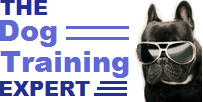For convenience, we will refer to your dog as “he” rather than “he or she”.
There are a number of aspects to training a dog which are often overlooked, or not well understood, by trainers especially novice trainers.
1 Tone and use of voice. You must speak clearly and distinctly to your dog when you issue him a command, and loud enough for him to realize it is not part of normal conversation, or he will be bewildered. He may not even realize that you are giving him a command. It will help, especially in the early stages, if you accompany the verbal command with a visual signal such as a hand signal, or a physical signal such as a slight tug on his lead.
2 If your dog does not respond correctly to a given command, then simply repeating the command will usually cause him to ignore your command. If for instance he does not “stay” when you instruct him to, rather than simply repeat the instruction you should firmly and authoritatively say “NO”. Be sure that you are facing him at the time and looking directly at him. If you keep praising him each time he makes a correct response, he will quickly learn the desired outcome to each of your commands.
3 Your dog is a smart animal. He is capable of interpreting a large number of verbal, visual and physical signals given by you. Experienced trainers make good use of all these methods and actions. You must always bear in mind that your dog will pick up a lot of information from your body language, so keep it positive.
4 Remember to praise and encourage your dog whenever he carries out an instruction correctly. Also keep in mind that a chewy treat is not the only, or necessarily the best, form of reward. Your dog may prefer being given a chance to play for a few minutes with one of his favourite toys, or being given a hug or a pat. Experiment with different rewards and observe his reaction.
We wish you every training success and years of enjoyment for both you and your dog.

